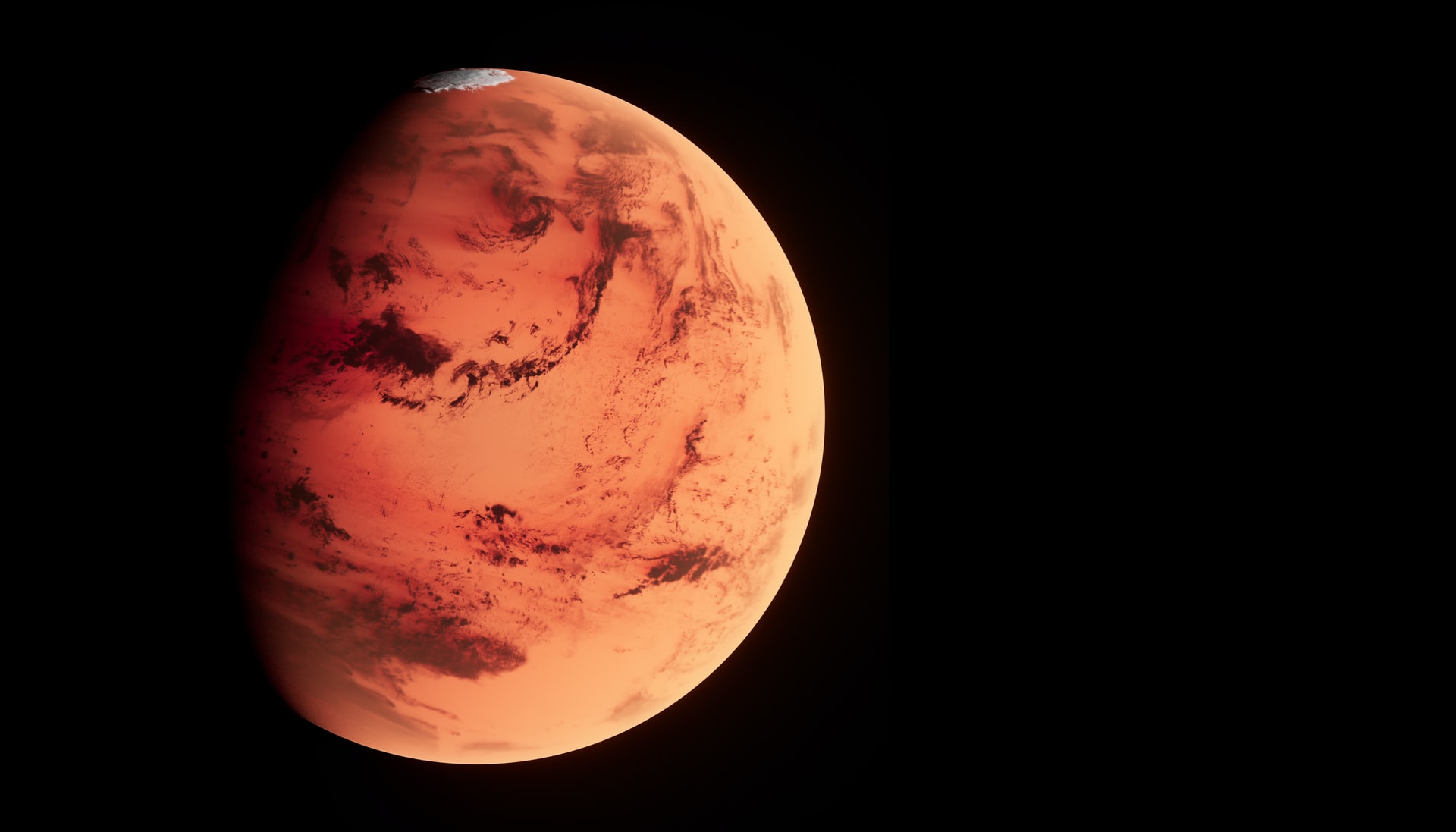
- Mars is the fourth planet in the solar system.
- Mars is also called the red planet due to its red color.
- Mars got its red color because of the iron oxide.
- Mars is a rocky planet with a thin atmosphere.
- Mars has half the radius of Earth and is less dense than Earth.
- Mars is 15% of Earth’s size and 11% of mass.
- The inclination of Mars’ axis is 25.19 degrees, which is almost the same as that of Earth’s axis.
- Mars has the same seasons as Earth, except that the long Martian year makes the seasons last twice as long as those on Earth.
- The average distance of Mars from the Sun is 230 million km (1.5 AU) and its orbital period is about 687 Earth days.
- The surface area of Mars is slightly less than the total continental area of Earth.
- The surface of Mars is made up of many craters like the Moon and many volcanoes, valleys, deserts and polar ice like Earth.
- Mars possesses important properties with respect to the whole galaxy, such as, the highest mountain in the solar system, Olympus Mons, and the largest valley, Valles Marineris, are on Mars.
- In 1965, Mariner 4 was the first spacecraft to pass by Mars.
- Mars is very Earth-like compared to other planets, and if there is water and life anywhere else in the solar system, it is most likely to be on Mars.
- Water in the form of ice was detected on Mars by the Phoenix Mars Lander on July 31, 2008.
- Currently, the Mars Odyssey, Mars Express and Mars Reconnaissance Orbiter are the three artificial satellites orbiting Mars.
- At present, Spirit and Opportunity are the two operational rovers present on Mars.
- Volcanoes have been found in many places on Mars. Many of these volcanoes are still alive.
- Olympus Mons, a volcano on Mars, is the tallest volcano in our solar system. Its height is 26.4 km. is
- There is a huge valley which can be seen from Earth with a powerful telescope. This valley is called Marina valley.
- On Mars, the temperature on the side of the Sun is about 20 degrees Celsius, while the temperature on the opposite side is 180 degrees Celsius.
- Mars has two small natural satellites called Phobos and Deimos. They are two irregularly shaped natural satellites of Mars.
- The Mars moons orbit very close to Mars, so they are believed to be asteroids caught in Mars’ gravity.
- Asaph Hall discovered both of the Mars satellites in 1877 and named after the Greek gods Phobos and Deimos.
- From the surface of Mars, the path of Phobos and Deimos across the sky looks very different from the path of Earth’s moons.
- Phobos rises in the west, sets in the east, and rises again in just 11 hours.
- Deimos rises in the east, and although it has an orbital period of 30 hours, it travels slowly across the sky and sets in the west after 2.7 days.
- Since Phobos’ orbit is lower than the geostationary orbit, its orbit is decreasing due to the gravity of Mars. After about 50 million years, Phobos will either crash into Mars or break into pieces and continue orbiting Mars as a ring.
- Available evidence suggests that Mars was more favorable to life in the past than it is now. But it is still not clear whether there was really life on Mars or not.
- So far, the United States, Soviet Russia, Europe, and Japan have launched more than a dozen orbiters, landers, and rovers to study Mars’ atmosphere, surface, and topography.









